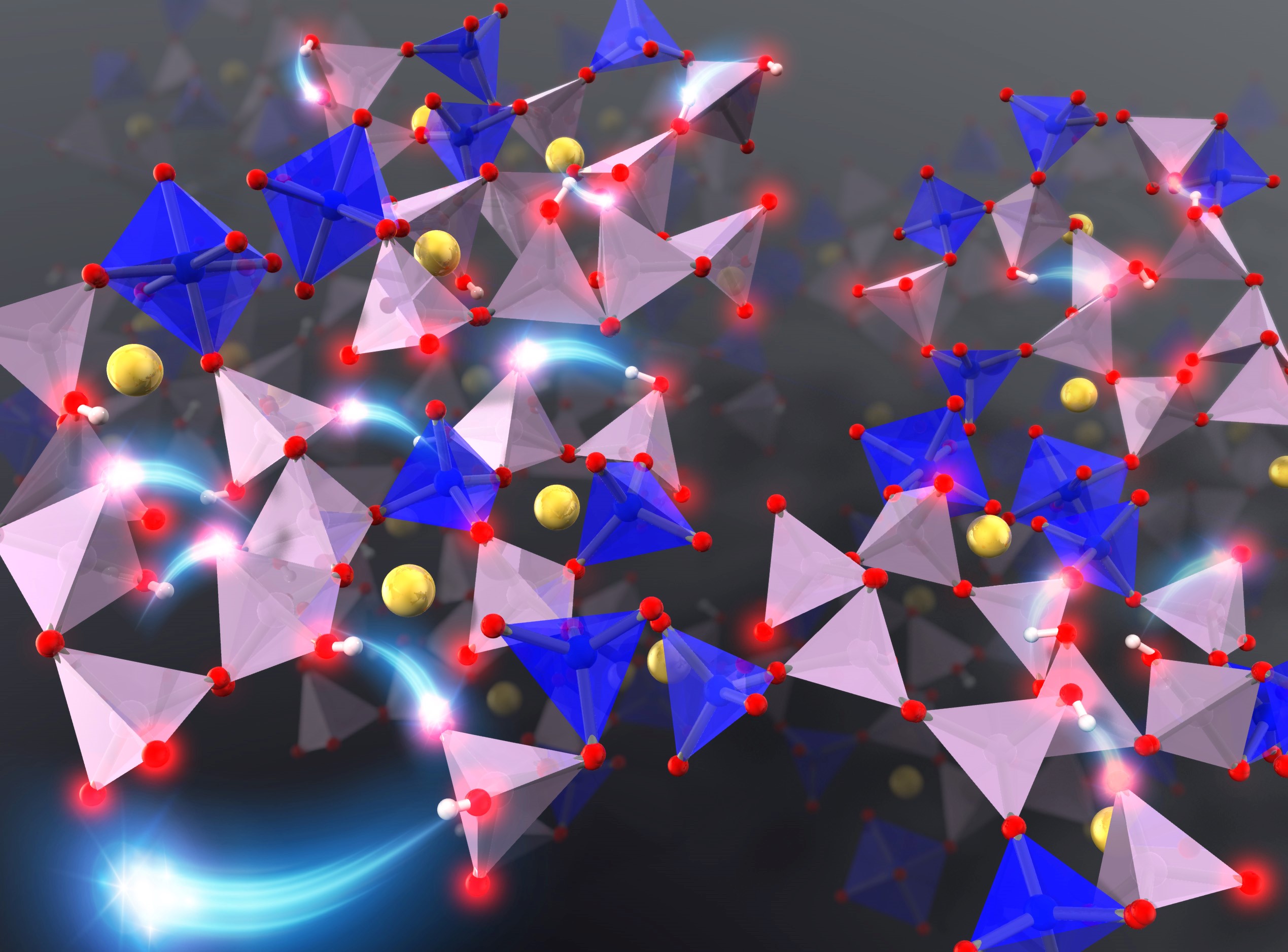NITech

Phosphate glasses are expected to have applications in a variety of fields. To improve their functionality, it is necessary to determine the association between their structure and ion diffusion characteristics. Recently, using first-principles molecular dynamic simulations, researchers from Nagoya Institute of Technology, Japan, have provided novel insights into the ion diffusion mechanisms of phosphate glass, suggesting that ionic conductivity and glass solubility can be manipulated by controlling the morphology of the material.
Recently, a team of researchers from Nagoya Institute of Technology, Japan, led by Dr. Tomoyuki Tamura, has theoretically deciphered the ion diffusion mechanism involved in the hydration reaction process of phosphate glasses. Their study has been published in the Physical Chemistry Chemical Physics journal.
In fully connected P2O5-based phosphate glass, three of the oxygen atoms in each phosphate unit are bonded to neighboring phosphorous atoms. To study the dynamics of ions in the phosphate glass during the hydration process, the researchers used a model made of phosphates with QP2 and QP3 morphologies, that contain two and three bridging oxygens per PO4 tetrahedron, respectively, along with six coordinated silicon structures.
The researchers implemented a theoretical computational approach known as “first-principles molecular dynamic (MD) simulation” to investigate the diffusion of proton and sodium ions into the glass.
Explaining the rationale for their unconventional approach, Dr. Tamura says, “First-principles MD simulation enabled us to assume the initial stage of water infiltrating and diffusing into silicophosphate glass and elucidate the diffusion of protons and inorganic ions for the first time.”
Based on their observation, the researchers proposed a mechanism where the protons “hop” and are adsorbed onto the non-bridging oxygen or “dangling” oxygen atom of nearby phosphates through hydrogen bonds. However, in the phosphate glass model they used, the QP2 phosphate units contributed more strongly to the diffusion of protons than the QP3 phosphate units. Thus, they found that the morphology of the phosphate network structure, or the “skeleton” of the glass, greatly affects the diffusion of ions.
They also noticed that when a sodium ion was present in the vicinity, the adsorption of a proton onto a QP2 phosphate unit weakened the electrostatic interaction between sodium and oxygen ions, inducing the chain diffusion of sodium ions.
The demand for new biomaterials for effective prevention and treatment is on the rise, and phosphate glasses are well-poised to fulfil this growing need. A large proportion of the population, comprising both elderly and younger people, suffers from diseases related to bone and muscle weaknesses.
As Dr. Tamura surmises, “Water-soluble silicophosphate glass is a promising candidate for supplying drugs or inorganic ions that promote tissue regeneration, and our study takes the research in glass technology one step nearer towards realizing the goal.”